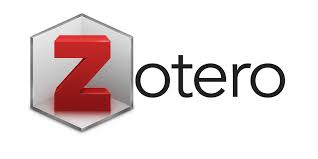Kemampuan Pemecahan Masalah Matematis melalui Pembelajaran Penemuan Terbimbing
DOI:
https://doi.org/10.29240/ja.v2i1.1488Keywords:
Problem Solving Skill, Discovery LearningAbstract
The gap between facts and the importance of problem solving skill to be developed, into cornerstone of this research. Research of improving students’ problem solving skill through guided discovery learning is the aim of this research. Qualitative descriptive be the method in this research. Pre-test and post-test was completed by 38 students. Pre-test and post-test result were analyzed descriptively. To get in-depth data about students’ problem solving ability, interviews were conducted with 20 students. Results of interviews, observations, and research journals were analyzed qualitatively. There is a difference in the improvement of problem solving skill, seen from the increase on total value and the increase on each indicator of problem solving skill. In total value, the increase have is in the low category. Also the increase of 1st indicator and 3rd indicator is in thw low category. But, indicator 2nd and 4th is in the medium category.
Downloads
References
Aini, I. N., & Hidayati, N. (2017). Tahap perkembangan kognitif matematika siswa SMP kelas VII berdasarkan teori Piaget ditinjau dari perbedaan jenis kelamin. JPPM (Jurnal Penelitian dan Pembelajaran Matematika), 10(2).Akinbobola, A. O & Afolabi, F. (2010). Contructivist Practice Through Guided Discovery Approach: The Effect on Students’ Cognitive Achievement in Nigerian Senior Secondary School Physics. Eurasian Journal Physics and Chemistry Education, 2(1),pp. 16-25. Retrieved from http://jurnal.untirta.ac.id/index.php/JPPM/article/view/2027
Arsefa, D. (2015). Peningkatan kemampuan berfikir kreatif matematis dan self-confidence siswa SMP melalui resources-based learning (RBL) dengan pendekatan saintifik. (Tesis). Sekolah Pascasarjana, Universitas Pendidikan Indonesia, Bandung
Devlin, K. (2007). Helping children learn mathematics. Publish by the National Academy Press. Retrieved from http://www.maa.org/devlin/devlin0907.html
Herawati, O D P., dkk. (2010). Pengaruh Pembelajaran Problem Posing terhadap Kemampuan Pemahaman Konsep Matematika Siswa Kelas XI IPA SMA Negeri 6 Palembang. Dalam Jurnal Pendidikan Matematika Volume 4. No.1. Retrieved from https://ejournal.unsri.ac.id
Hevriansyah, P., & Megawanti, P. (2017). Pengaruh kemampuan awal terhadap hasil belajar matematika. JKPM (Jurnal Kajian Pendidikan Matematika), 2(1), 37-44. Retrieved from https://journal.lppmunindra.ac.id/index.php/jkpm/article/view/1893
Husna, dkk. (2013). Peningkatan Kemampuan Pemecahan Masalah dan Komunikasi Matematis Siswa Sekolah Menengah Pertama Melalui Model Pembelajaran Kooperatif Tipe Think-Pair-Share (TPS). Jurnal Peluang Vol 1, No. 2, April 2013, ISSN: 2302-5158. Retrieved from http://e-repository.unsyiah.ac.id/
Gulo, W. (2008). Strategi Belajar Mengajar. Jakarta: Grasindo
Jacob, C. (2003). Konstruktivisme & Metakognitif. Bandung: Universitas Pendidikan Indonesia Fakultas Pendidikan Matematika dan IPA
Kania, N. (2017). Efektivitas Alat Peraga Konkret terhadap Peningkatan Visual Thinking Siswa. Jurnal Theorems, 1(2), 301715. Khan, S. (2013). The One World School House. Jakarta: Noura Books. Retrieved from https://www.neliti.com/publications/ 301715/efektivitas-alat-peraga-konkret-terhadap-peningkatan-visual-thinking-siswa
Kilpatrick, J., & Swafford, J. (2002). Helping children learn mathematics. National Academy Press
Lestari, W. (2017). Pengaruh Kemampuan Awal Matematika dan Motivasi Belajar Terhadap Hasil Belajar Matematika. Jurnal Analisa, 3(1), 76-84. Markaban. (2006). Model Pembelajaran matematika dengan pendekatan penemuan terbimbing. Yogayakarta: PPPG Matematika. Retrieved from https://journal.uinsgd.ac.id/index.php/analisa/article/view/1499
Mulyadi, M., Riyadi, R., & Subanti, S. (2015). Analisis Kesalahan Dalam Menyelesaikan Soal Cerita Pada Materi Luas Permukaan Bangun Ruang Berdasarkan Newman’s Error Analysis (Nea) Ditinjau Dari Kemampuan Spasial. Jurnal Pembelajaran Matematika, 3(4). Retrieved from http://www.jurnal.fkip.uns.ac.id/
NCTM. (2000). Principle and Standars for school mathematics. National Council of Teachers of Mathematics
Nugroho, I. D., & Widodo, S.A. (2018). Pembelajaran Matematika dengan Metode Penemuan Terbimbing untuk Meningkatkan Kemampuan Representasi dan Pemecahan Masalah Matematis Siswa SMK. In Prosdiding Seminar Nasional Pendidikan Matematika Etnomatnesia. Retrieved from http://www.jurnal.ustjogja.ac.id/
Prabawanto, S. (2013). Peningkatan Kemampuan Pemecahan Masalah, Komunikasi, dan Self-Efficacy Matematis Mahasiswa melalui Pembelajaran dengan Pendekatan Metacognitive Scaffolding. S3 Tesis, Universitas Pendidikan Indonesia
Polya, G. (1973). How to Solve It A New Aspevt of Mathematical Method. New Jersey: Princeton University Press
Rahmawati, A. (2014). Meningkatkan Kemampuan Pemahaman Matematika Siswa SMP Melalui Metode Penemuan Terbimbing. Prosiding Seminar Nasional Pendidikan Matematika Program Pascasarjana STKIP Siliwangi Bandung. Vol. 1. Retrieved from https://ikipsiliwangi.ac.id/semnasmat/
Rosdianwinata, E. (2015). Penerapan metode discovery untuk meningkatkan kemampuan pemecahan masalah matematika siswa. Jurnal Kajian Pendidikan dan Pengajaran, 1(1), pp. 1-7. Retrieved from http://jm.ejournal.id/index.php/mendidik/article/view/1
Ruseffendi, E. T. (2006). Pengantar Kepada Membantu Guru Mengembangkan Kompetensinya dalam Pengajaran Matematika untuk Meningkatkan CBSA. Bandung: Tarsito
Santrock, J. W. (2012) Life Span Development: Perkembangan Masa Hidup Edisi Ketigabelas. Jakarta :Erlangga
Schunk, D. H. (2012). Learning Theories: an Educational Perspective. Yogyakarta: Pustaka Pelajar
Setyawan, I. K. A. (2012). Analisis Korelasi Kompleksitas Materi, Daya Dukung, dan Intake Siswa Terhadap Prestasi Belajar Biologi pada Sekolah Menengah Pertama (SMP) Negeri di Kecamatan Kuta Kabupaten Badung. Jurnal Penelitian dan Evaluasi Pendidikan Indonesia, 2(1). Schunk, D. H. (2012). Learning Theories: an Educational Perspective. Yogyakarta: Pustaka Pelajar. Retrieved from http://119.252.161.254/e-journal/index.php/jurnal_ep/article/ view/30
Sternberg, R. J & Ben-Zeev, T. (1996). The nature of mathematical thinking. Mahwah, Nj: Lawrence Erlbaum Associates, Inc
Sudijono, A. (2011). Evaluasi Pendidikan. Jakarta: Raja Grafindo Persada
Sugiyono. (2014). Statistika untuk Penelitian. Bandung:Alfabeta
Suhendar (2008). Pengaruh Penambahan Waktu Belajar Agama Islam Terhadap Prestasi Belajar Siswa Pada Mata Pelajaran PAI. Jurnal Pendidikan Universitas Garut. Vol. 02, No 01, 2008, 26-36. Retrieved from https://eprints.uny.ac.id/7407/
Sumarmo, U. (2012). Proses berpikir matematik: apa dan mengapa dikembangkan. Bahan belajar matakuliah proses berpikir matematik program S2 pendidikan matematika STKIP Siliwangi. Retrieved from https://www.academia.edu/10346582/
Suryadi, D & Herman, T. (2004). Eksplorasi matematika: pembelajaran pemecahan masalah. Jakarta: Karya Duta Wahana
Suryadi,D (2012). Membangun Budaya Baru dalam Berpikir Matematika. Bandung: Rizqi Press
Syah, M. (2006). Islamic English: A Competency-Based Reading Comprehension. Bandung: PT Remaja Rosdakarya
Uhti. (2011). Pembelajaran Kooperatif dengan Pendekatan Open Ended untuk Meningkatkan Kemampuan Pemecahan Masalah Matematis Siswa Sekolah Menengah. Prosiding Seminar Nasional Matematika dan Pendidikan Matematika Pada Tanggal 3 Desember 2011 Di jurusan Pendidikan Matematika FMIPA UNY. Retrieved from https://eprints.uny.ac.id
Yee, F. P (2002a). The role of problem to enhance pedagogical practice in Siangpore mathematics classroom. The mathematics educator. Vol.6, No.2, 15-31, 2002
Yee, F. P (2002b). Using short open-ended mathematics question to promote thinking and understanding. Retrieved from : http://math. unipa. it/~ grim/SiFoong. PDF
Published
Versions
- 2025-12-25 (2)
- 2020-05-28 (1)
Issue
Section
Citation Check
License
Copyright (c) 2020 Irni Latifa Irsal

This work is licensed under a Creative Commons Attribution-NonCommercial-ShareAlike 4.0 International License.
Authors who publish with ARITHMETIC: Academic Journal of Math agree to the following terms:
- Authors retain copyright and grant the journal right of first publication with the work simultaneously licensed under a Creative Commons Attribution-NonCommercial-ShareAlike 4.0 International License (CC BY-NC-SA 4.0) that allows others to share the work with an acknowledgment of the work's authorship and initial publication in this journal.
- Authors are able to enter into separate, additional contractual arrangements for the non-exclusive distribution of the journal's published version of the work (e.g., post it to an institutional repository or publish it in a book), with an acknowledgment of its initial publication in this journal.
- Authors are permitted and encouraged to post their work online (e.g., in institutional repositories or on their website) prior to and during the submission process, as it can lead to productive exchanges, as well as earlier and greater citation of published work (See The Effect of Open Access).







